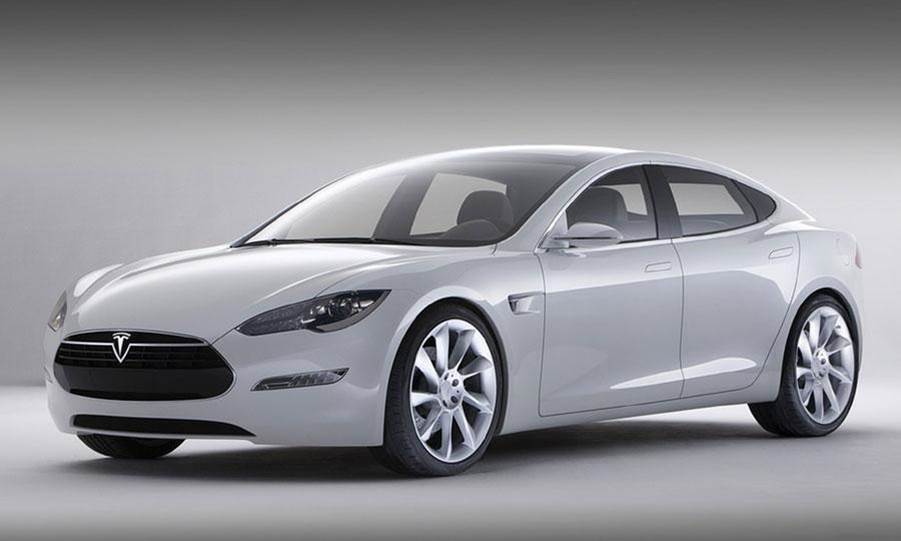Tesla announcing plan to become world's largest rechargeable battery manufacturer
 Tesla isn’t just a car company producing the world’s best regarded electric vehicles. It’s also driving forward a network of very fast chargers (20 minutes or so) across the US and its other important markets such as Norway. And, lastly but most significantly, it is changing the economics of battery storage.
Tesla isn’t just a car company producing the world’s best regarded electric vehicles. It’s also driving forward a network of very fast chargers (20 minutes or so) across the US and its other important markets such as Norway. And, lastly but most significantly, it is changing the economics of battery storage.
Nobody quite knows how far Tesla has pushed down the price of batteries but some commentators suggest that the business is already paying less than $250 a kWh for its lithium ion rechargeable packs. At this price, it might almost makes sense to use Tesla batteries to store domestic solar power. And, tagged on to the end of the annual letter to shareholders written last week, the company confirms that its ambition is indeed to provide electricity storage for solar PV installations as well for its cars.
Within the next few days Tesla will be announcing its plans for the world’s largest battery factory. The gossip is that a site in New Mexico will be chosen for what Tesla founder Elon Musk calls a ‘gigafactory’. This single site will be making about the half the world’s total supply of lithium ion batteries in three or four years’ time. Tesla will need more capital to finance this $2bn+ investment but the stock market and company shareholder Panasonic seem more than willing to stump up the cash.
The reason for the new factory is obvious. Musk wants to sell half a million a year of his third generation of cars, probably starting in 2017. The big bottleneck is batteries. The world will buy about 2 billion phones this year, almost all with lithium ion batteries made to the same basic design as each Tesla’s 8,000 cells of stored electricity in its current cars. The table below shows that Tesla’s need for batteries will exceed that of all the mobile phone manufacturers in the world. Even if you add in 100 million tablets and other electronic devices sold each year and Tesla still probably will need to double the world capacity to make lithium ion cells. Musk knows that without an enormous new factory, he’ll never get enough batteries.
Table 1
| Phones |
| 1800 million phones |
| times |
| 0.01 kWh each of battery |
| equals |
| 18 million kWh of batteries |
| Tesla |
| 0.5 million Tesla cars a year |
| times |
| 50 kWh battery pack in each |
| equals |
| 25 million kWh of batteries |
If he can push the cost of batteries down to $200/kWh by the latter part of the decade, the storage pack in a car with 50 kWh (perhaps 200 miles range) will cost about $10,000. Call that £8,000 at retail, but with a saving of perhaps £2,000 in fuel costs a year and the financial arguments for going electric begin to look strong. In a stroke of the marketing genius that characterises the company, charging the car at one of its 20 minute ‘superchargers’ is free. Add in the likely lower long run costs of maintaining an electric car, and Tesla’s highly impressive safety performance and the case for going electric begins to seem very persuasive by the last years of this decade. Its aim to drive mass-market adoption of electric cars looks achievable.
Tesla has had a wider ambition for some time. Once it has driven down the price of batteries far enough, it becomes sensible to use them to store electricity from small scale renewables. You won’t have to buy a car: small sized battery packs will sit in the garage sopping up excess power from the panels on the roof when the home wouldn’t otherwise use the electricity.
What would the economics look like for a householder in the UK with 4 kW of solar panels on the roof and a 5kWh battery pack, perhaps costing £1,000 installed?
Table 2
| 4kw of PV |
| produces |
| 3,500 kWh a year |
| of which |
| 2,000 kWh spilled to grid per year |
| of which |
| 1,000 kWh usefully stored in batteries for night use[1] |
| saving |
| 14p per kWh |
| produces |
| £140 saving a year |
The returns aren’t great. Not many people will spend £1,000 on something only saving £140 a year. But Musk openly talks about getting battery costs down to $100 a kWh within a decade or so. At some point in the not-to-distant future domestic electricity storage using lithium ion batteries begins to look compelling, particularly if power prices continue their upward course.
Many start-ups around the world are focusing on battery technologies that don’t use lithium ion. But whatever the fundamental advantages of these approaches, they face the unpleasant prospect of having to compete with a Tesla’s enormous manufacturing scale and rapid growing experience of making cheaper and cheaper cells. Even if lithium ion isn’t the best approach, with Musk’s blessing it will probably destroy the chances of any competing technology getting successfully to market, at least in niches up to 1 MWh or so.
[1] A 5 kWh battery will not be able to handle the surplus power from a 4 kW array in high summer so only part of the electricity produced by the PV and not used by the house will be storable. Second, many households have relatively low nighttime power use at times when the sun is strongest. It may be that the battery will not be discharged overnight at such times.